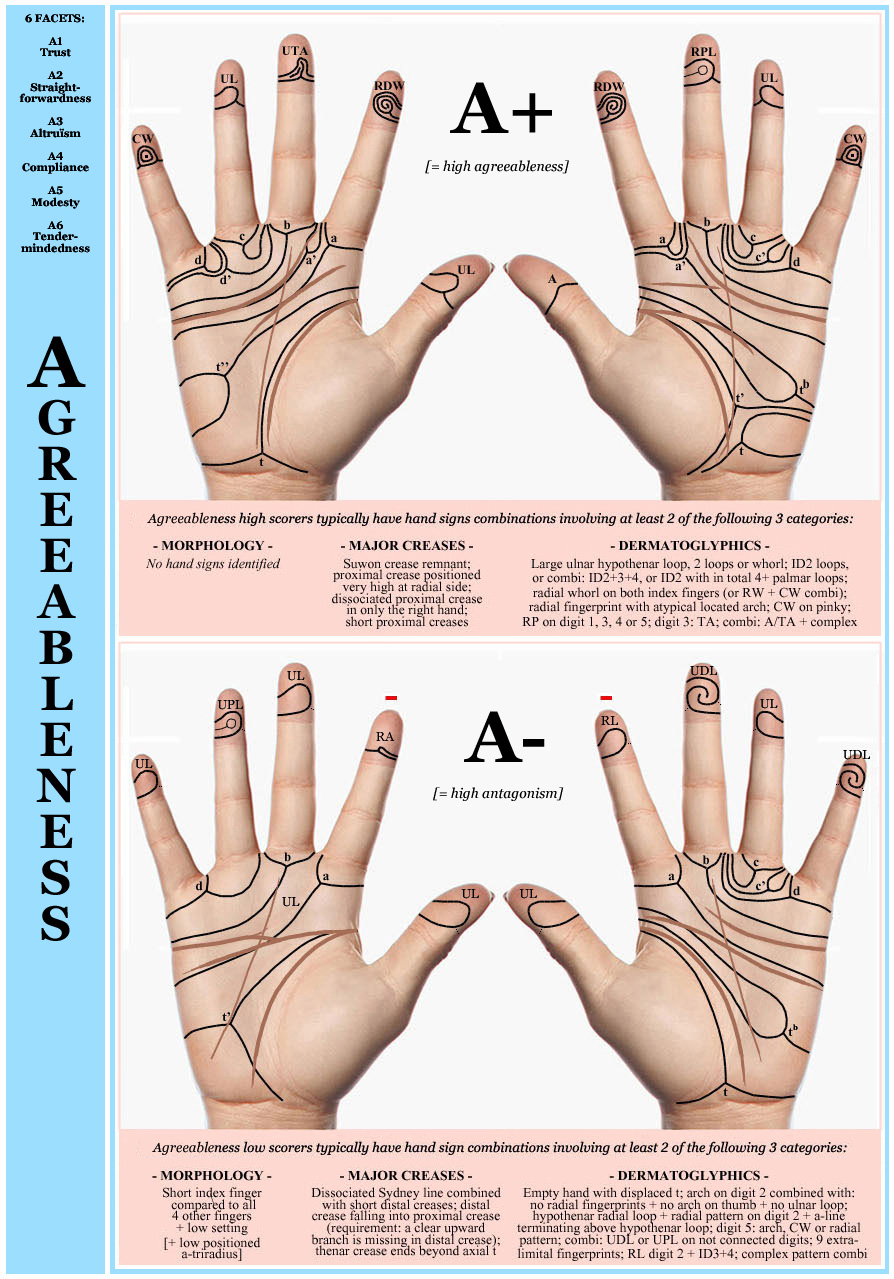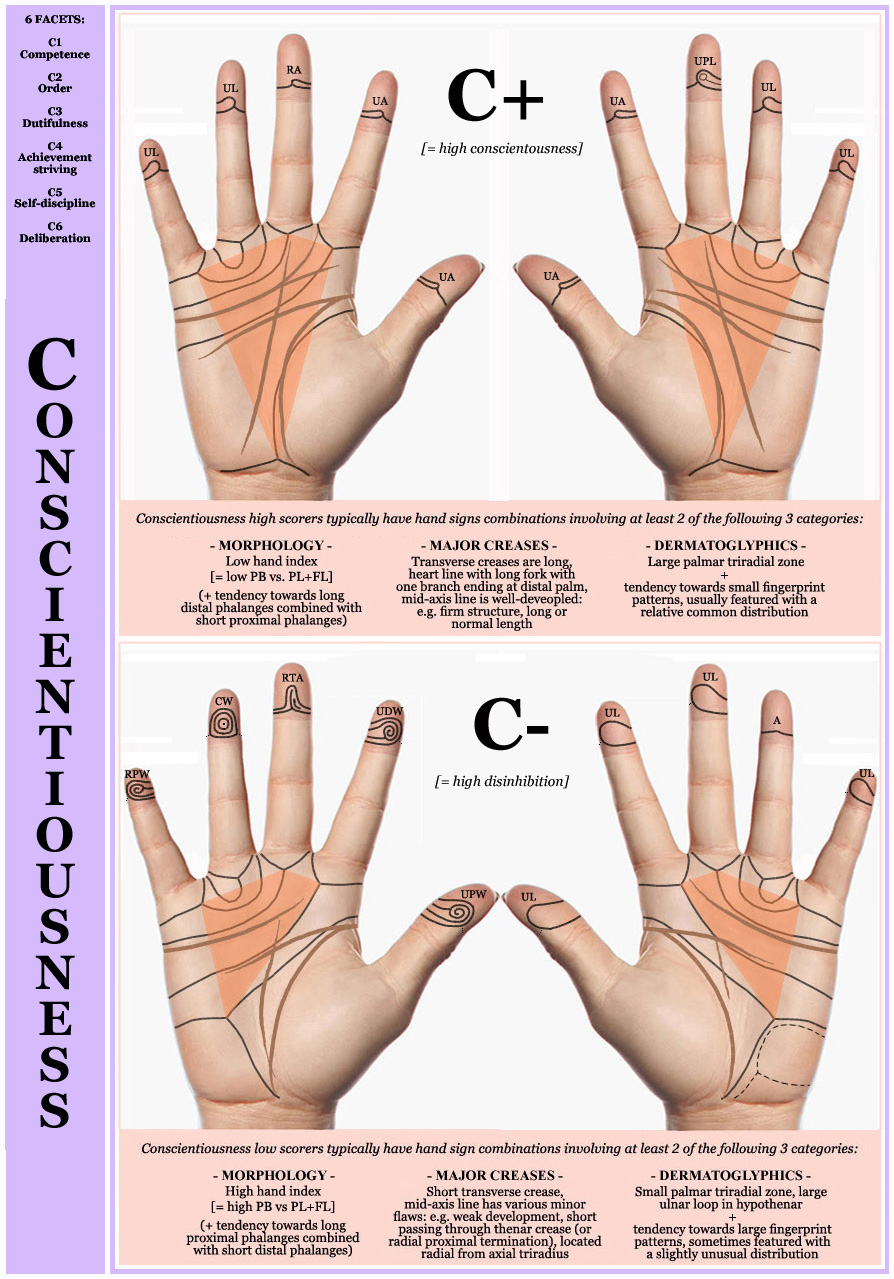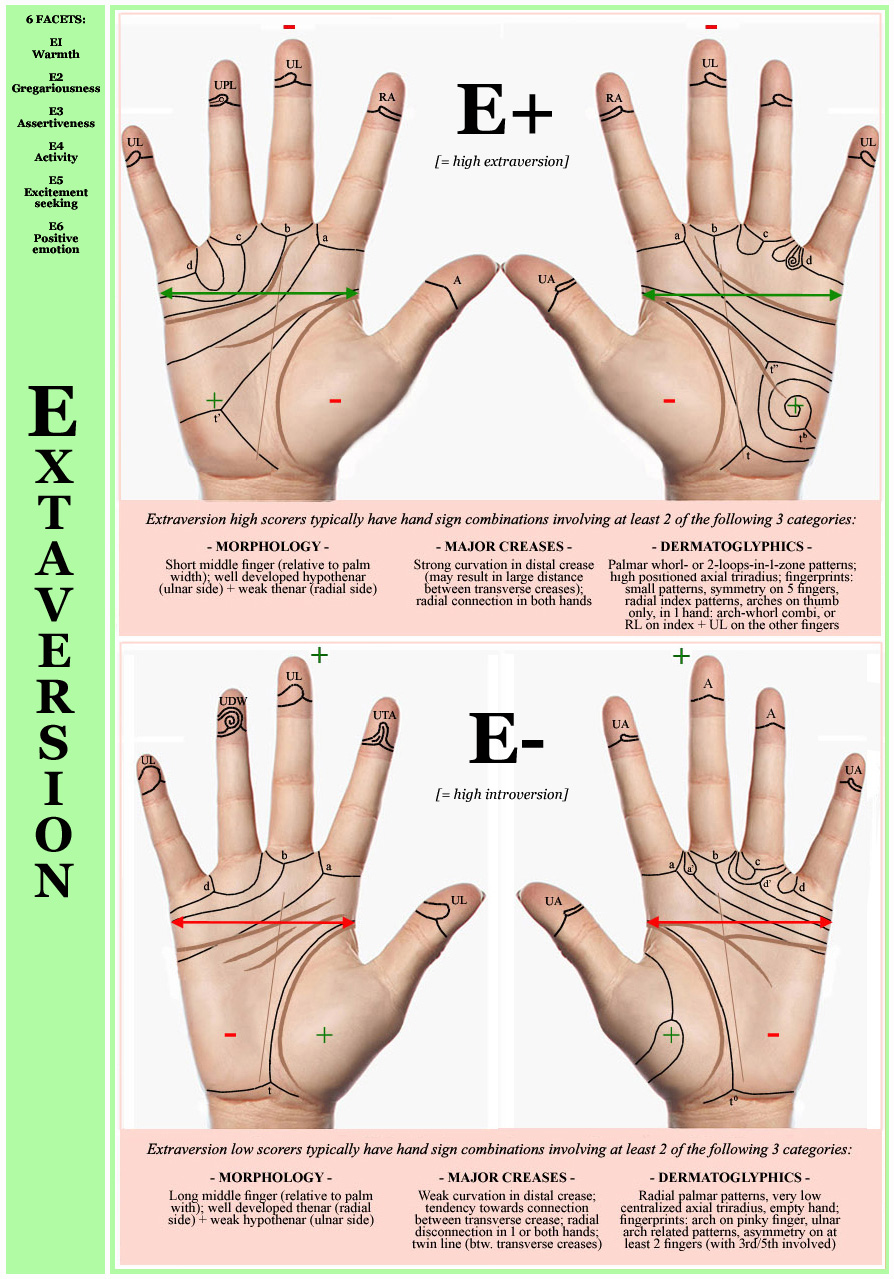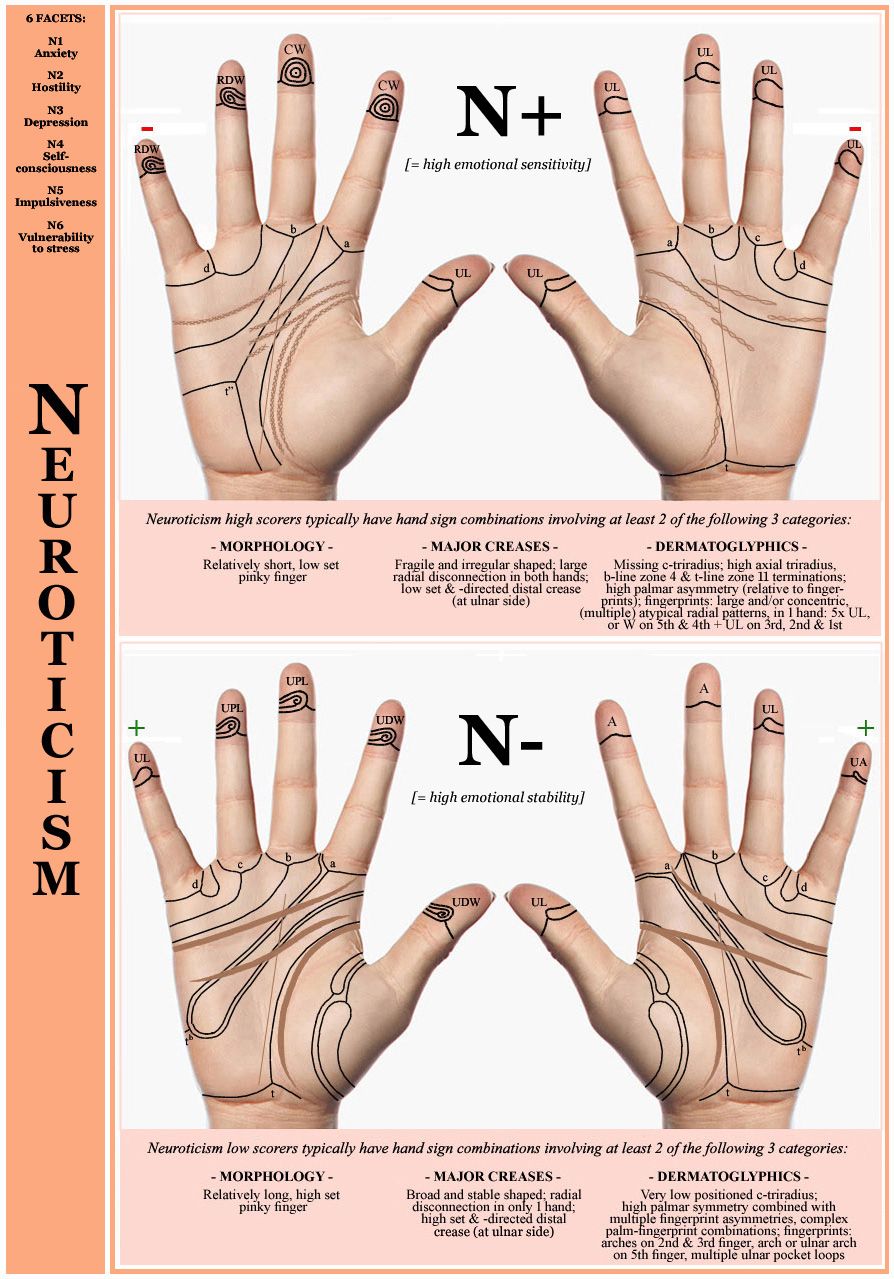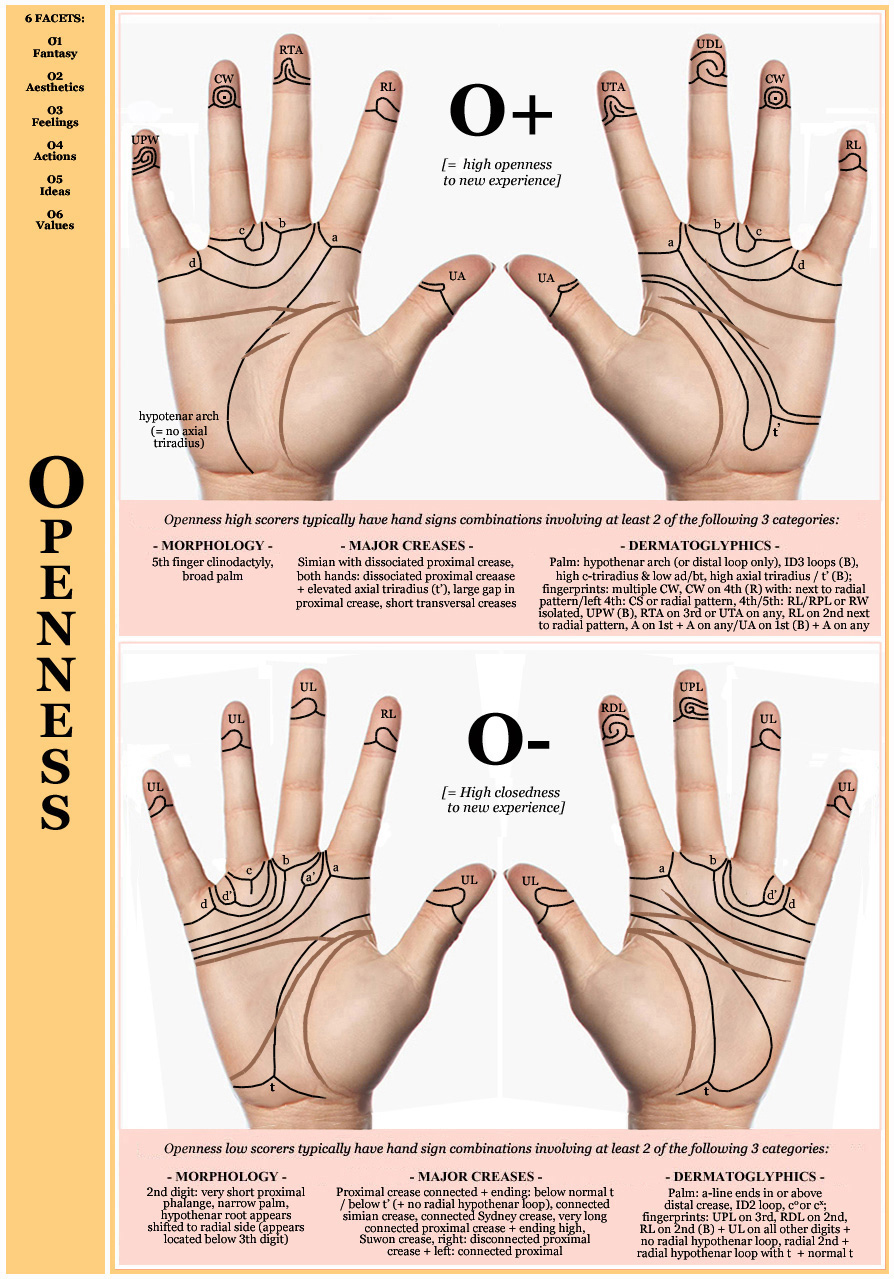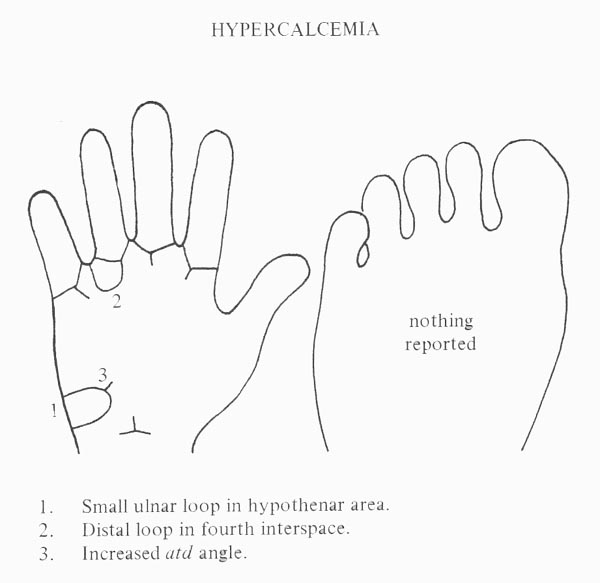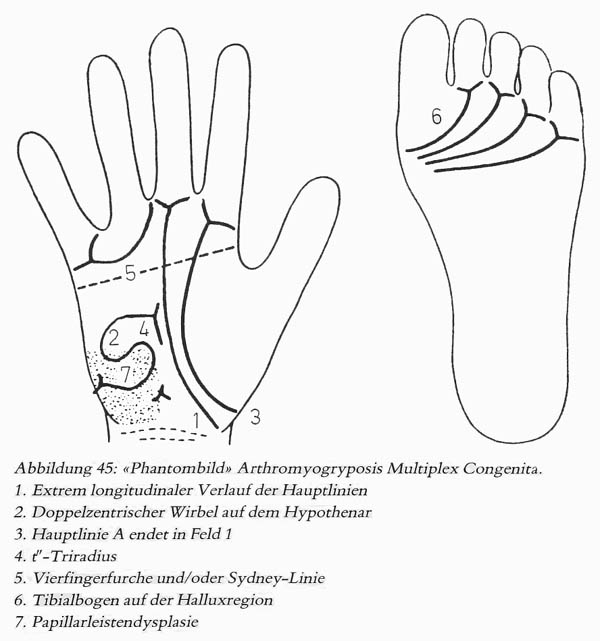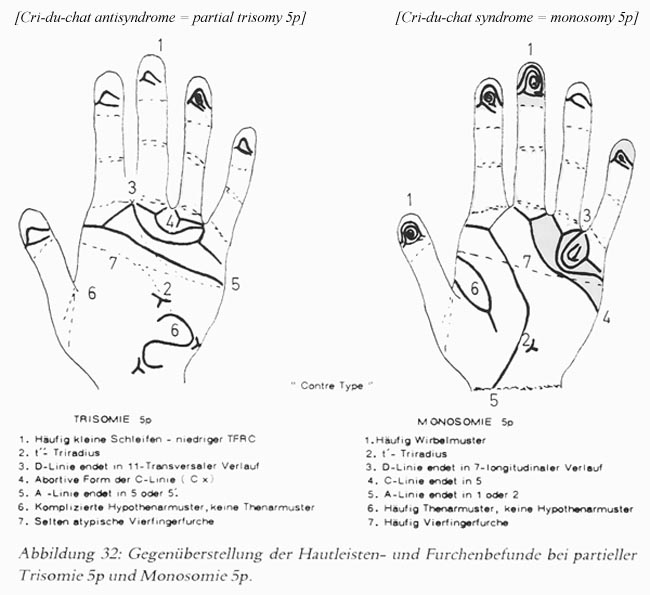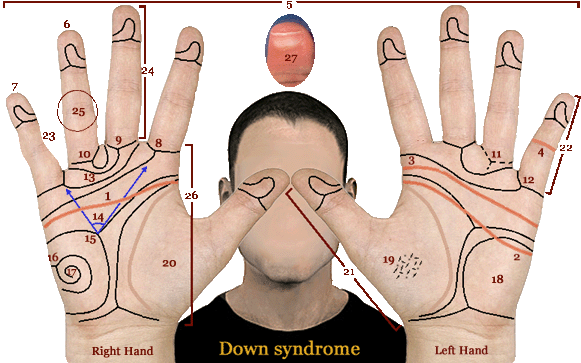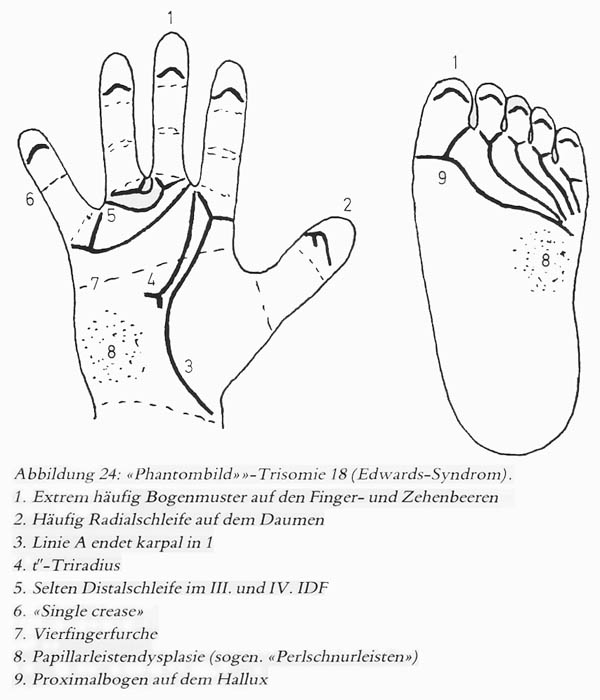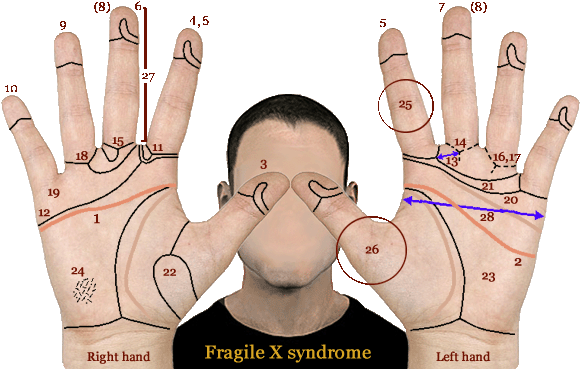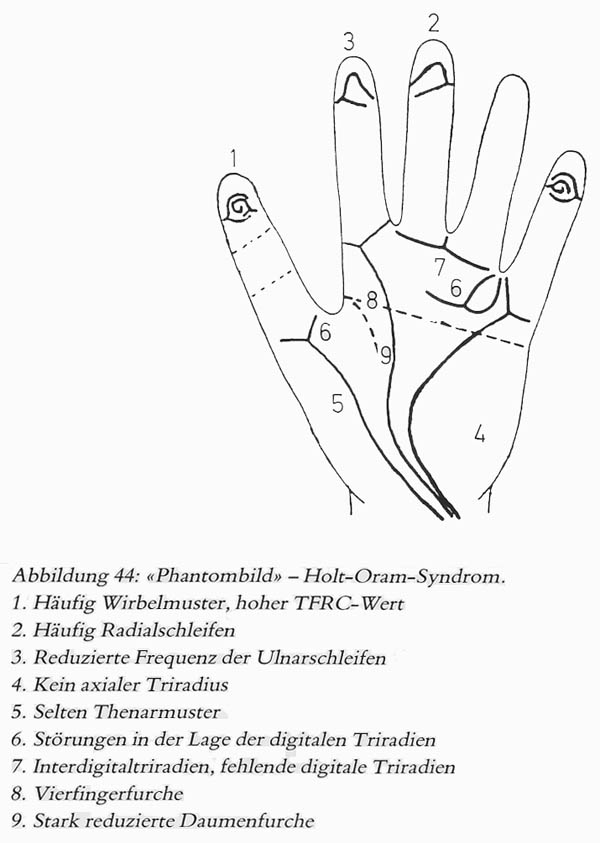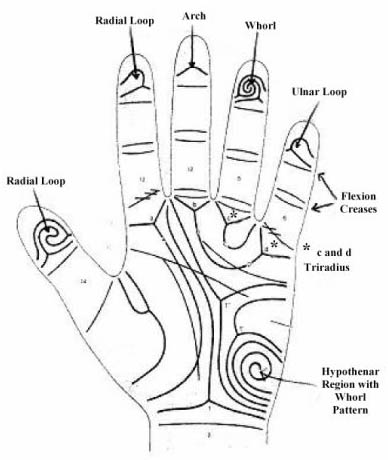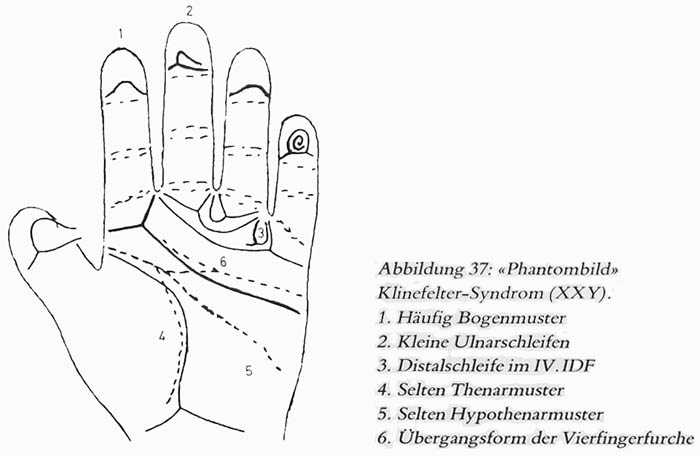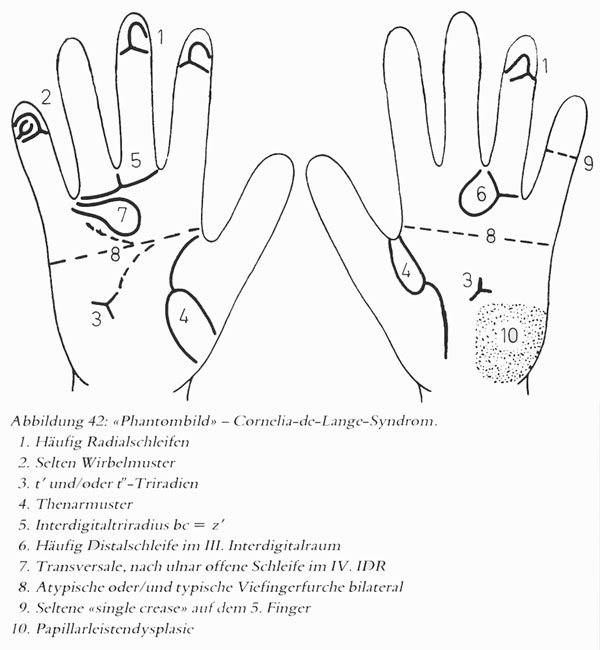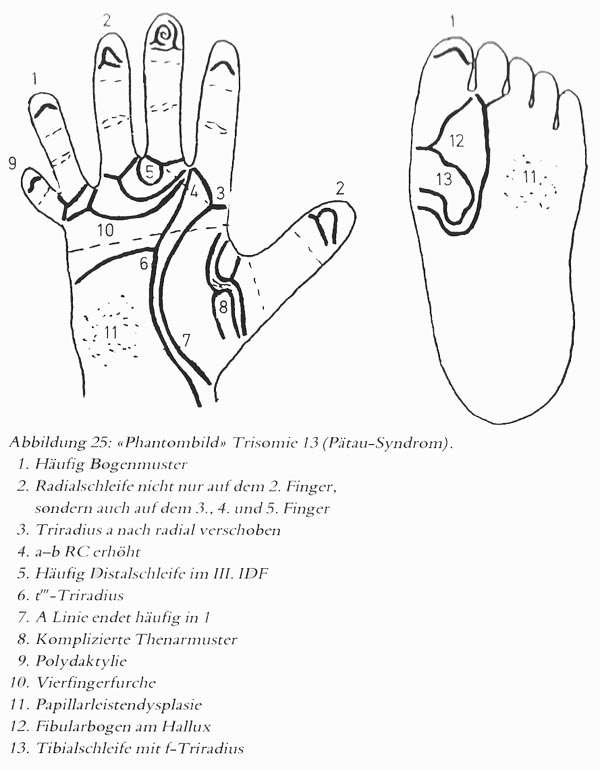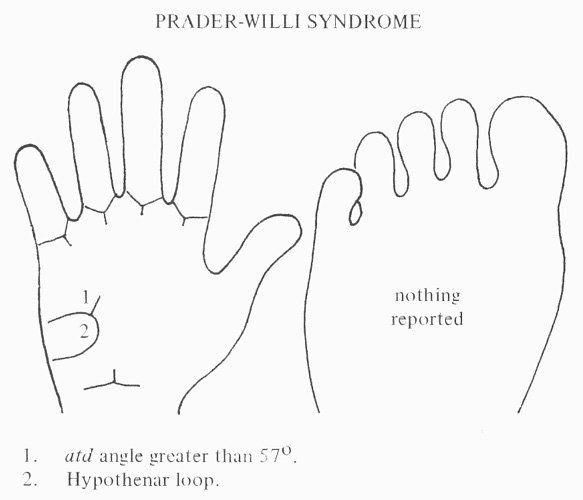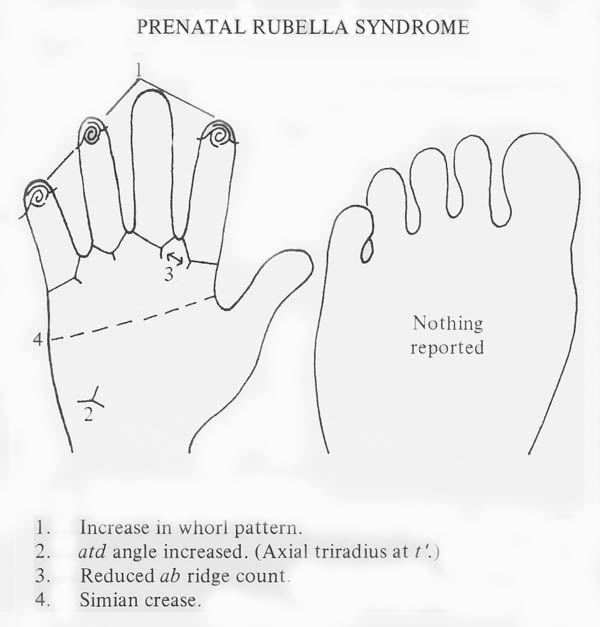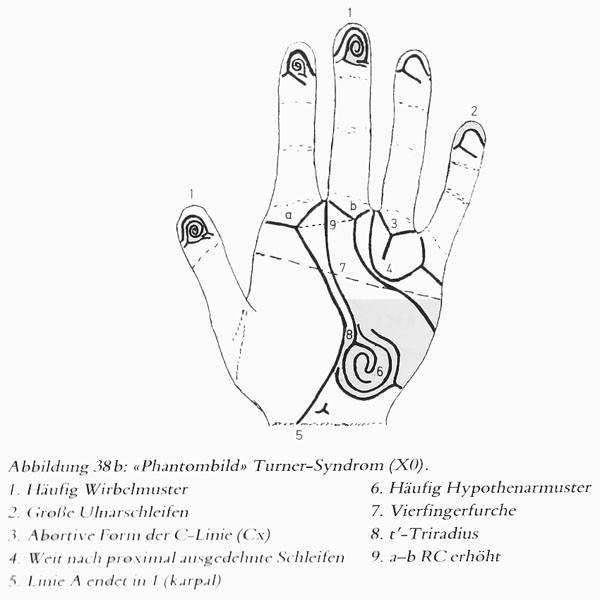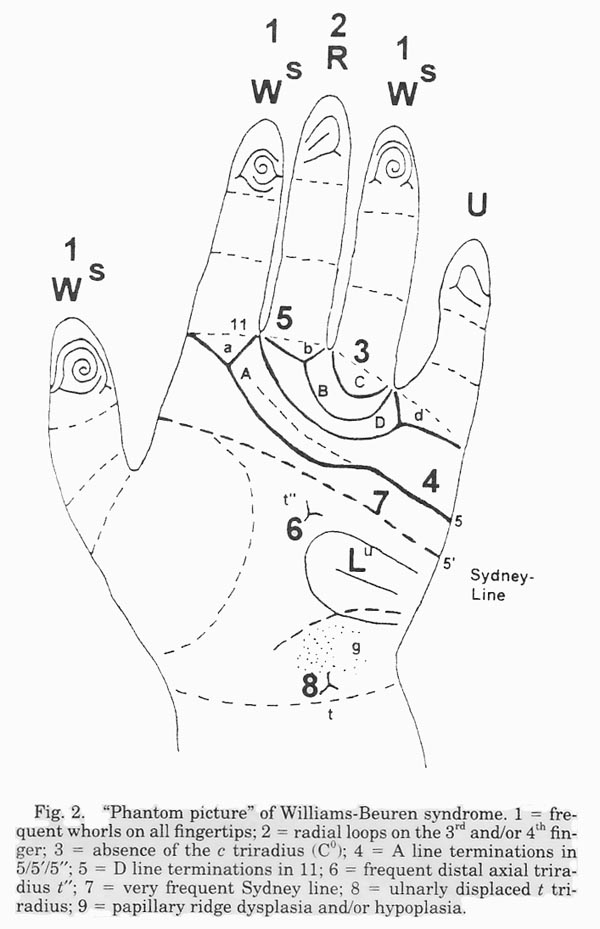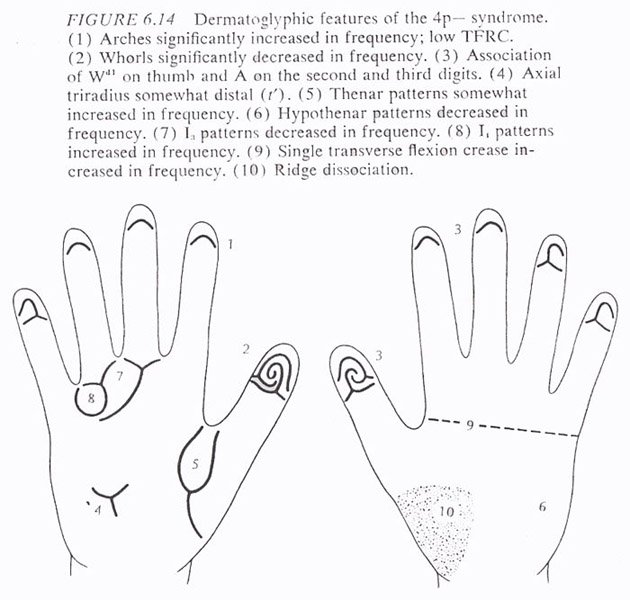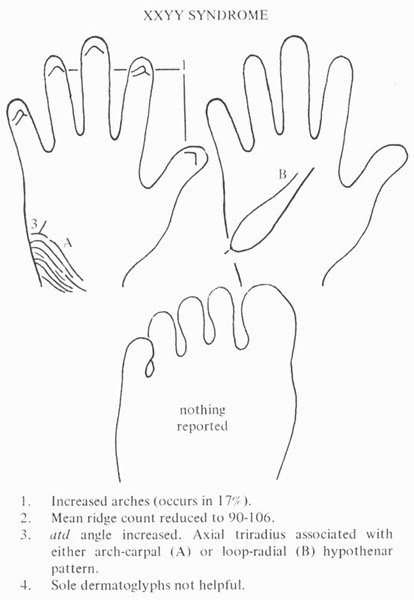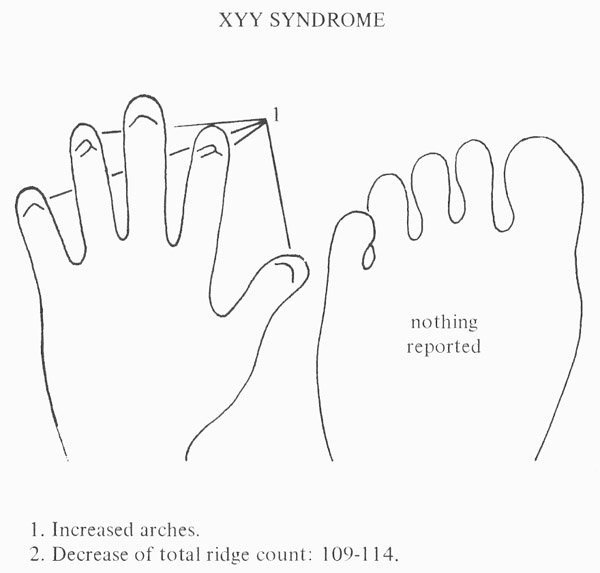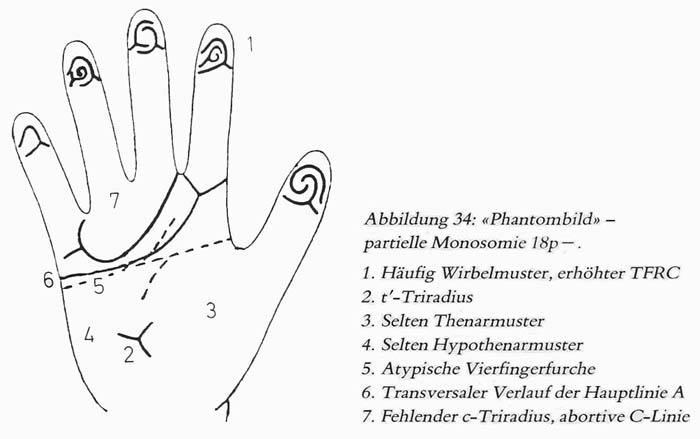
Scientific Hand Charts Collection:
Smith-Lemli-Opitz syndrome [SLOS]
1 Hand Chart for Smith-Lemli-Opitz syndrome!
Smith-Lemli-Opitz syndrome - a.k.a. SLOS, or 7-dehydrocholesterol reductase deficiency - is an inborn error of cholesterol synthesis caused by a mutation in the enzyme 7-Dehydrocholesterol reductase, or DHCR7. It causes a broad spectrum of effects, ranging from mild intellectual disability and behavioural problems to lethal malformations.
Prevalence: described to be close to 1 in 40,000 births.
One rather superficial hand chart is available for Smith-Lemli-Opitz syndrome describing only 3 characteristics in the dermatoglyphics, involving: 1) increased whorls producing a high ridge count, 2) simian crease - see picture below.
NOTICE: Individual hand features described below should not get associated in isolation with any theme; only combinations involving multiple hand levels have potential for diagnostic purposes.
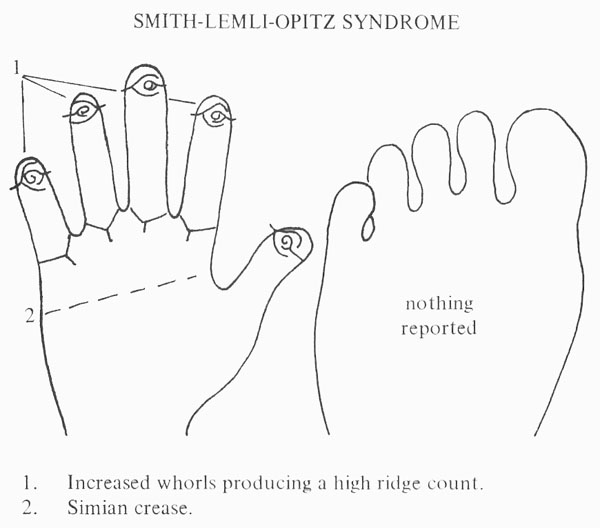
Handbook of Clinical Dermatoglyphs (1971), p.51;
authors: M.S. Elbualy & J.D. Schindeler
Other significant hand signs (not reported inside the hand charts):
Various sources have reported that the characteristic fingerprint pattern in SLOS typically manifests in a reduced occurence of ulnar loops; therefore, next to a high occurence of whorls, a high occurence of arches is also possible (producing a low ridge count). A high prevalence of a distal axial triradius (t") and/or a thenar/ID1 pattern are also common (source: B. Scheimann & M. Alter, 1976).
Hand related behavior characteristics typical for Smith-Lemli-Opitz syndrome are hand biting & hand flapping/flicking; marked tactile hypersensitivity of the hands and feet is also seen in more than 50% of patients (source: Journal of Medical Genetics, 2000).
Short, flexed fingers [clenched hand] are ocasionally also present (source: J.X. Scott, 2004).
A short, proximally placed thumb may also be present; polydactyly/extra fingers on the ulnar/post-axial side of the hand - see picture below - is also often present (source: Wikipedia).
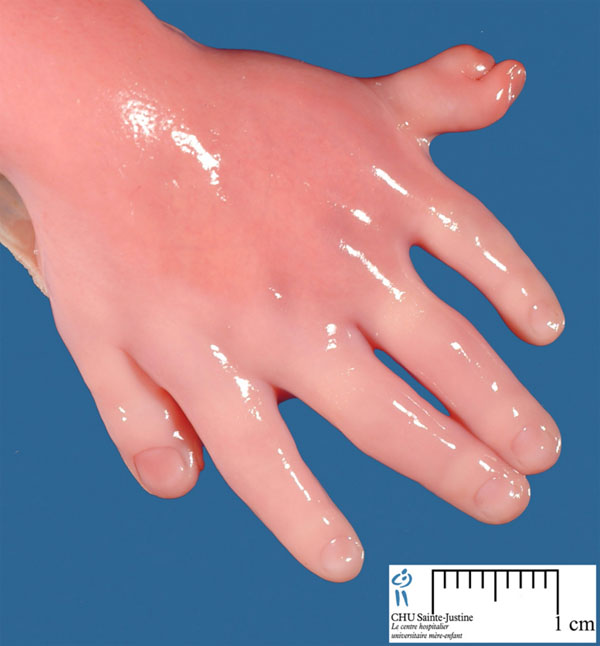
All significant hand signs listed above for Smith-Lemli-Opitz syndrome together cover five out of the nine perspectives of the hand as defined according Multi-Perspective Hand Reading (including hand level 1, 5, 6, 8 & 9).
A summary of the most significant hand sign combinations in Smith-Lemli-Opitz syndrome is described here:
Decoding the language of the hand:
hand sign combinations in Smith-Lemli-Opitz syndrome!
Hand charts are available for many other diagnostic issues;
start browsing HERE
![]() SCIENTIFIC HAND CHARTS: Introduction
SCIENTIFIC HAND CHARTS: Introduction
Hand charts for Big Five personality dimensions:
• Hand chart(s) for Agreeableness (2x: 1 in 4 people)
• Hand chart(s) for Conscientiousness (2x: 1 in 4 people)
• Hand chart(s) for Extraversion (2x: 1 in 4 people)
• Hand chart(s) Neuroticism (2x: 1 in 4 people)
• Hand chart(s) Openness (2x: 1 in 4 people)
Hand charts for diseases:
• Hand charts for hypercalcemia (1 in 4,000 people)
Hand charts for syndromes:
• Hand charts for arthrogryposis (1 in 10,000 people)
• Hand charts for cri-du-chat syndrome (1 in 30,000 people)
• Hand charts for Down syndrome (1 in 700 live births)
• Hand charts for Edwards syndrome (1 in 6,000 live births)
• Hand charts for fetal alcolhol syndrome (1 in 500 people)
• Hand charts for fragile-X syndrome (1 in 5,000 people)
• Hand charts for Holt-Oram syndrome (1 in 100,000 live b.)
• Hand charts for Kabuki syndrome (1 in 32,000 people)
• Hand charts for Klinefelter syndrome (1 in 1000 males)
• Hand charts for de Lange syndrome (1 in 15,000 live births)
• Hand charts for Marfan syndrome (1 in 5,000 people)
• Hand charts for Patau syndrome (1 in 15,000 live births)
• Hand charts for Prader-Willi syndrome (1 in 15,000 births)
• Hand charts for Rubella syndrome (1 in 100,000 people)
• Hand charts for Rubinstein syndrome (1 in 200,000 births)
• Hand charts for SLOS (1 in 40,000 births)
• Hand charts for Turner syndrome (1 in 2,000 female births)
• Hand charts for Warkany syndrome (1 in 200,000 births)
• Hand charts for Williams syndrome (1 in 14,000 births)
• Hand charts for Wolf-Hirschhorn syndrome (1 in 50,000 b.)
• Hand charts for XXYY syndrome (1 in 30,000 male births)
• Hand charts for XYY syndrome (1 in 1,000 male births)
• Hand charts for 18 deletion syndromes (2 in 40,000 live b.)
NOTICE: Reflexology hand charts are not included in this section because the scientific foundation of any of such charts is actually unknown; nevertheless, you can read more about the fundamentals of such charts HERE.
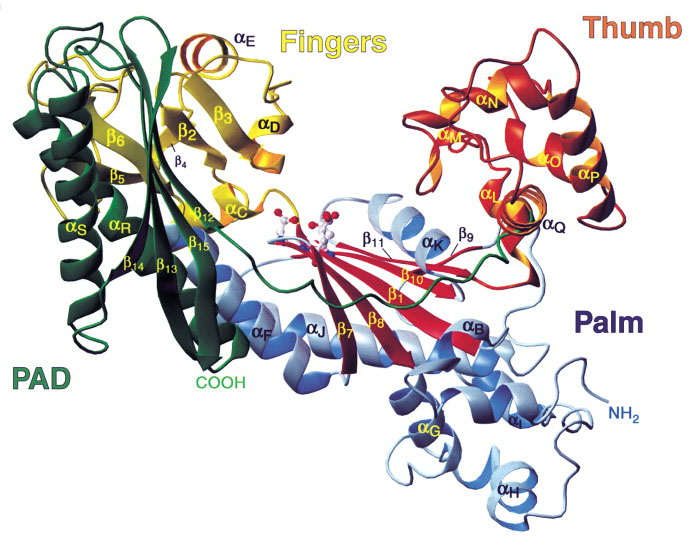
Other charts & maps:
• Fingerprints world map
• Hand reading experts world map
• Hand reflexology charts
